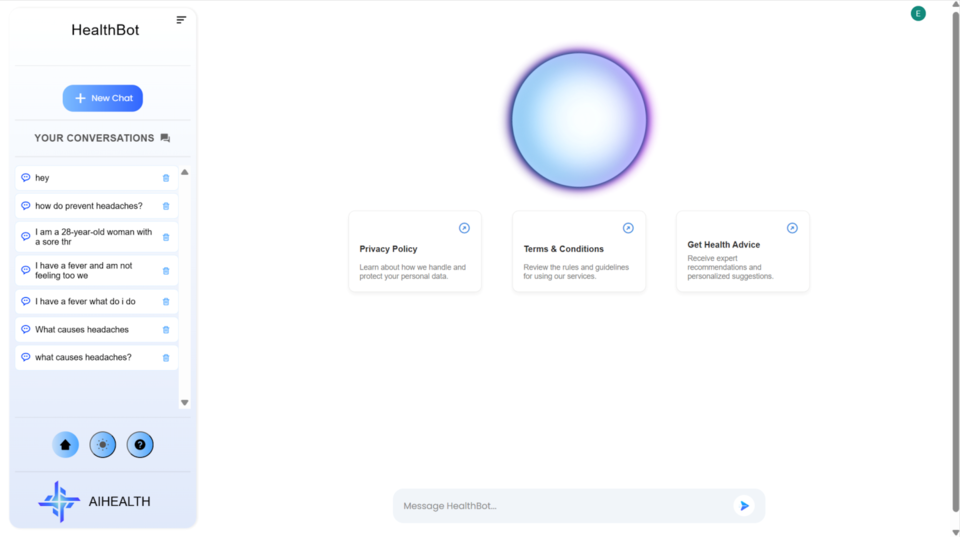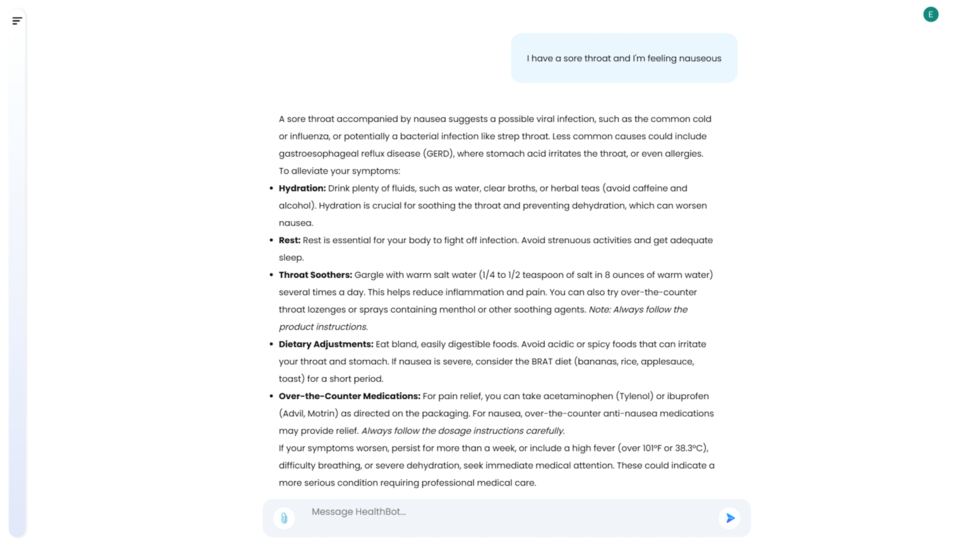OAKVILLE - Aayan Wasti, a 16-year-old high school student from White Oaks Secondary School, saw a problem that hit close to home: too many people lack access to timely healthcare information.
"I wanted to change that," Wasti said. "Technology has always been something I’m good at, and healthcare is something I’m passionate about, so I thought: 'why not combine the two?'"
Combining his interests, he co-founded and is the chief executive officer of AIHealth, a company aiming to make medical insights more accessible through artificial intelligence. Alongside fellow high school students Ivan Jehad (17), AIHealth’s chief marketing officer, Aayan Rahman (17), chief technology officer, Brianna Azan, the UX/UI designer, and several student volunteers, the team has developed HealthBot, an AI-powered tool designed to provide users with clear, verified health information at their fingertips.

HealthBot is a chatbot where users can inquire about anything health-related—whether it's symptoms, general wellness, or medical terms—and receive answers based on verified sources, such as the National Institutes of Health, the Centres for Disease Control and Prevention, and the World Health Organization.
Wasti says that it's not "just another chatbot," however answering random questions," however. "It’s specifically designed for health-related inquiries, with built-in safeguards to prevent misinformation," he said.
"We don’t claim to replace doctors, but we do provide a first step for people looking for reliable, quick health insights. The goal is to bridge the gap between everyday health concerns and professional medical advice, making sure users get accurate information without having to sift through pages of conflicting results online."

When HealthBot first launched, the team faced technical hurdles. "At first, it was far from perfect," Wasti said. "There were issues with text recognition, images weren’t processing properly, and overall, it just wasn’t where I wanted it to be."
A breakthrough came when Wasti met Rahman at a hackathon. "He was a game-changer — helping fix major technical bugs, develop new features, and even introducing us to more people who wanted to contribute," Wasti recalled. With Rahman’s expertise, they were able to resolve critical bugs and expand HealthBot’s functionality, he says.
Despite the technical improvements, the biggest challenge wasn’t just overcoming bugs: it was gaining credibility.
"It’s hard enough to build a healthcare startup, but doing it as high school students meant we had to work twice as hard to prove we weren’t just experimenting. We were building something real," Wasti said. He says that many assumed AIHealth was solely a side project. "We had to let our product and results speak for themselves," he said.
Wasti also says that user responses have been overwhelmingly positive. "A lot of users have told us they love how straightforward and accessible HealthBot is," he said. "It saves them time and gives them the information they need without having to dig through endless search results."
Some early adopters suggested a more conversational tone and a more user-friendly design, prompting the team to introduce updates like dark mode and a streamlined interface.
With HealthBot now up and running, AIHealth is expanding into mental health support. The team is developing MyMindFlow.co, an AI-powered therapy assistant aimed at providing accessible mental health resources. "It’s still a work in progress, but AIHealth has grown into something way bigger than I originally imagined, and I’m excited to see where it goes next," Wasti said.
Looking forward, the students hope to integrate AIHealth’s technology into healthcare institutions. However, they recognize the challenge of earning trust in the medical field. "A lot of healthcare professionals are understandably hesitant to trust software built by high school students," Wasti said. For now, the team plans to focus on their work and refine their platforms, Wasti says.
Reflecting on AIHealth’s journey, Wasti, Rahman and Jehad encourage other young entrepreneurs to take risks, push through doubt, and stay persistent. "You’re not going to get anywhere without taking risks. If you want to build something meaningful, you have to take chances, put yourself out there, and be okay with failing along the way," Wasti said.
"People will doubt you. Prove them wrong ...Talk less, build more."
